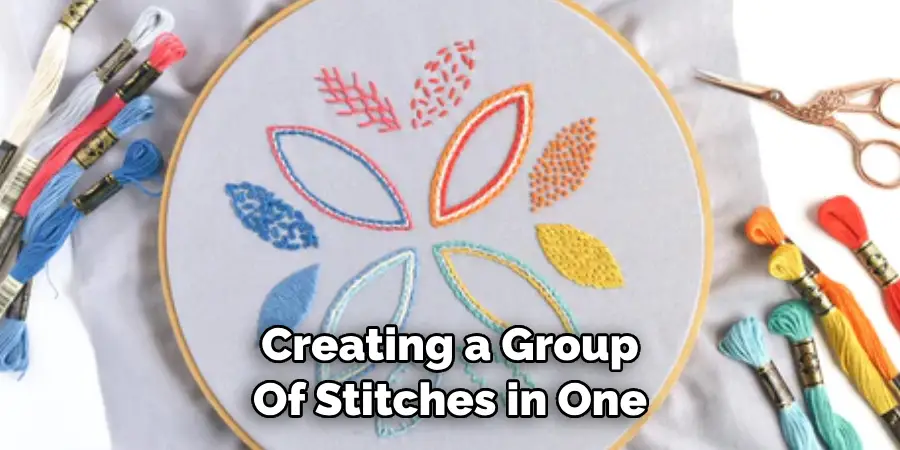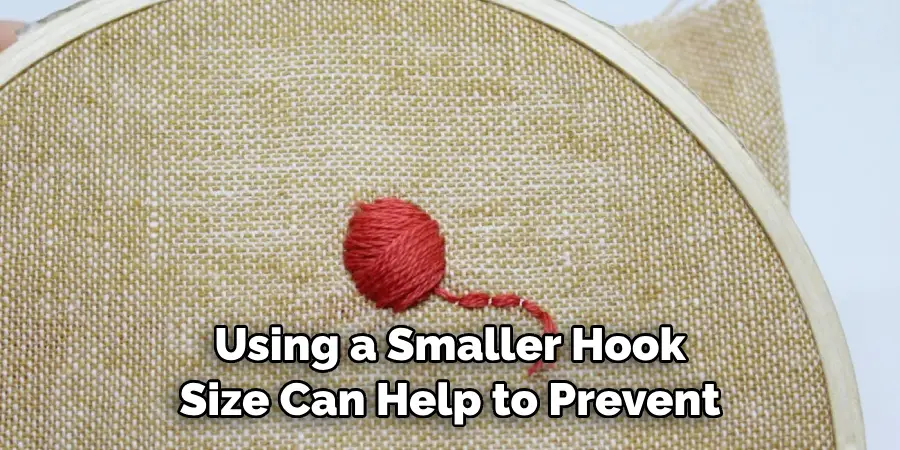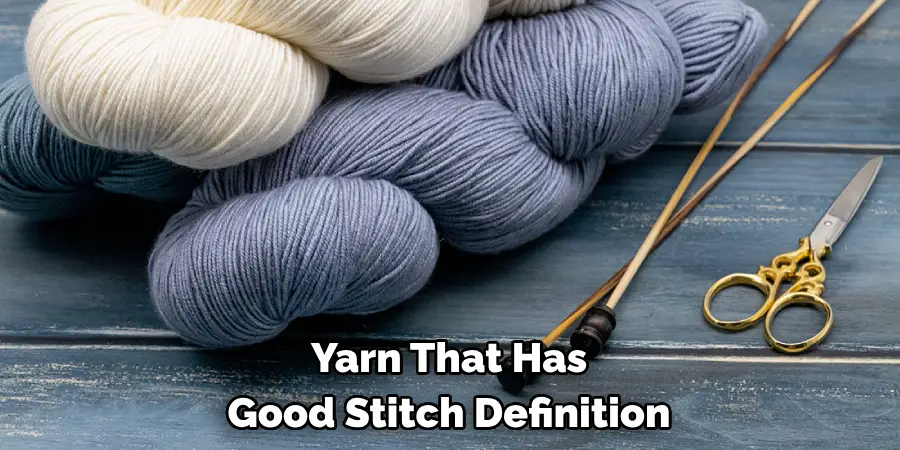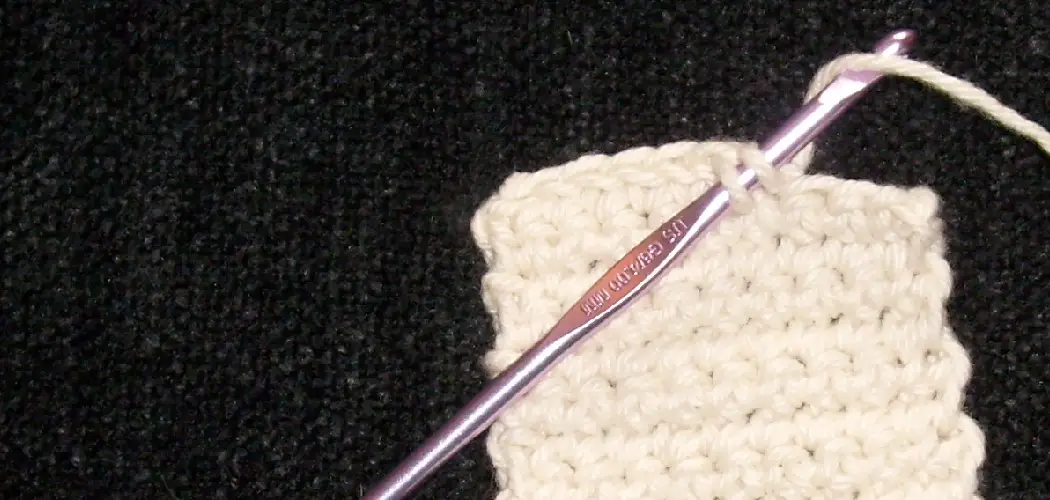In the intricate world of crochet, understanding the technique of skipping stitches is a valuable skill that allows crafters to introduce open spaces, create lacy patterns, and shape their projects with precision. Whether you’re a beginner seeking to broaden your crochet repertoire or an experienced artisan looking to add nuance to your designs, the art of skipping stitches offers a versatile and visually appealing element to your creations.

In this guide, we will unravel the secrets of how to skip stitches in crochet, exploring the various applications and effects this technique can achieve. From airy and delicate shawls to textured blankets, the ability to skip stitches empowers crocheters to infuse their work with a distinctive charm. Join us on this crochet journey as we navigate the steps, tips, and creative possibilities of skipping stitches, transforming your projects into bespoke works of fiber art.
Different Types of Stitches that Can Be Skipped
Skipping stitches in crochet can be a handy technique that allows you to create unique and intricate designs without having to work through every single stitch. Whether you are looking to add texture, increase the length of your project, or simply want to try something new, skipping stitches can come in handy.
But before we dive into how to skip stitches, it’s important to understand that not all stitches can be skipped. While most basic crochet stitches such as single, double, and treble crochet stitches can easily be skipped, more complex or textured stitches like puffs or clusters may not work well with this technique.
Single Crochet Skip Stitch
The single crochet skip stitch is the simplest form of skipping a stitch. It involves working into the chain space of the previous row instead of the top loops of the stitch. This results in creating a longer stitch which can add length or create an interesting pattern to your work.
To create a single crochet skip stitch, simply insert your hook into the chain space of the previous row and complete a single crochet as you normally would.
Double Crochet Skip Stitch
The double crochet skip stitch is similar to the single crochet skip stitch, but instead of working into the chain space, you will work into the top loops of the previous row. This creates a longer and more pronounced gap in your work.
To create a double crochet skip stitch, insert your hook into the top loops of the previous row and complete a double crochet as you normally would.
Cluster Stitch Skip
Unlike the previous two stitches, the cluster stitch is a bit more complex and may require some practice. It involves creating a group of stitches in one stitch space, which can then be skipped in the following rows.

To create a cluster stitch skip, work into the desired stitch space as if you were going to complete a cluster stitch (multiple stitches worked into one space), but instead of completing all of the stitches, leave the last loop of each stitch on your hook. Once you have worked into all of the desired stitch spaces, yarn over and pull through all remaining loops to complete the cluster.
10 Methods How to Skip Stitches in Crochet
1. Use a Smaller Hook Size
Using a smaller hook size can help to prevent skipping stitches in crochet. A smaller hook will create tighter stitches, making it less likely for the yarn to slip off the hook or for stitches to be missed.
2. Check your Tension
Tension is important in crochet as it determines how tight or loose your stitches are. If you find that you are consistently skipping stitches, try adjusting your tension by either holding the yarn tighter or looser as you work. This can also be achieved by using a different sized crochet hook.
3. Count Your Stitches
Sometimes, skipping stitches can simply be due to human error and not paying attention while crocheting. To avoid this, make sure to count your stitches after each row or round to ensure that you have the correct number. This will also help you stay on track with your pattern and avoid any mistakes.
4. Use Stitch Markers
Stitch markers can be helpful in keeping track of where you are in a pattern and preventing skipped stitches. Place a stitch marker at the beginning of each round or every few rows to easily keep track of where you should be working.
5. Slow Down
Crocheting too quickly can lead to mistakes and skipped stitches. Take your time and focus on each stitch as you go to prevent any errors. You can also try placing your needle or hook in a comfortable position and keeping it there while you work on each stitch. This will help you maintain an even tension and avoid any skipped stitches.
6. Practice Proper Tension when Turning

When turning at the end of a row, make sure to maintain proper tension on the yarn so that it does not become too loose or too tight. This will help prevent skipped stitches on the next row. Though it may seem like a small detail, proper tension is an important aspect of crochet that can greatly affect the overall appearance and quality of your project.
7. Use Stitch Holders
If you need to put down your work mid-row, use stitch holders to hold onto your current place instead of leaving it hanging on the hook. This will help prevent dropped or skipped stitches when picking up again. Stitch holders come in various forms such as safety pin-style, locking stitch markers, or even just a spare piece of yarn. Simply place the stitches on the holder and secure it closed until you are ready to return to your project.
8. Avoid Using Slippery Yarns
Some types of yarn, such as silk or bamboo, may be more prone to slipping off the hook and causing skipped stitches. Stick with sturdier yarns like wool or cotton for easier crocheting. Though they may be more difficult to work with at first, if you are just learning how to crochet, these yarns will be easier to manage and help reduce the likelihood of skipped stitches.
9. Use a Different Stitch
If you are consistently struggling with skipped stitches, try using a different stitch that may be easier for you to work with. For example, single crochet tends to be more difficult to skip than double crochet. If you typically use single crochet stitches, try switching to double crochet or half-double crochet for a smoother experience.
10. Practice and Patience
As with any skill, crocheting takes practice and patience. Don’t get discouraged if you experience skipped stitches – keep practicing and eventually it will become second nature to avoid them. However, if you do come across an occasional skipped stitch, don’t stress. As long as you catch it early and correct it, it won’t be noticeable in the finished product.

Things to Consider When Skipping Stitches in Crochet
Crochet is one of the most popular crafts that many people enjoy. It’s a great way to unwind, relax and create beautiful pieces of art. One of the skills that every crocheter needs to learn is how to skip stitches. This technique allows you to decrease the number of stitches in your work while maintaining its shape and structure.
Understanding Your Pattern
The first thing to consider when skipping stitches in crochet is understanding your pattern. Whether you’re working on a written pattern or following a video tutorial, it’s crucial to have a clear understanding of the pattern before you begin. Make sure you read or watch the entire pattern and familiarize yourself with any special stitches or techniques that may be involved.
Choosing the Right Yarn
When skipping stitches, it’s important to choose a yarn that has good stitch definition. This means that you can easily see each individual stitch, making it easier to spot where you need to skip a stitch. Yarns that have a lot of texture or fuzzy fibers can make it difficult to see the stitches and may cause confusion when trying to skip stitches.

Keeping Count
Skipping stitches involves decreasing the number of stitches in your work, so keeping count is crucial. Losing track of how many stitches you’ve skipped can throw off the entire pattern and result in a misshapen or uneven piece. To avoid this, it’s helpful to use stitch markers to keep track of where you need to skip stitches.
Conclusion
In conclusion, skipping stitches in crochet is a useful technique that can come in handy when working on certain projects. Whether you’re looking to create an airy and lacy fabric or add some texture to your design, knowing how to skip stitches can elevate your crochet skills. So don’t be afraid to experiment and try out different variations of this technique. And most importantly, have fun with it!
The beauty of crocheting lies in its versatility and creativity, so don’t be afraid to make mistakes and learn from them. As they say, “practice makes perfect,” so keep practicing how to skip stitches in crochet and see where it takes you. Share your successes (and even failures) with us in the comments below – we love hearing from our fellow crocheters! And if you found this post helpful, don’t forget to share it with your friends who are also avid crocheters.
In the intricate world of crochet, understanding the technique of skipping stitches is a valuable skill that allows crafters to introduce open spaces, create lacy patterns, and shape their projects with precision. Whether you’re a beginner seeking to broaden your crochet repertoire or an experienced artisan looking to add nuance to your designs, the art of skipping stitches offers a versatile and visually appealing element to your creations.
Expertise:
Crafting expert with a focus on innovative techniques and diverse materials.
Specialization:
- Textile arts (weaving, embroidery, and fabric dyeing)
- Woodworking and furniture design
- Mixed media and upcycling projects
Recognition:
- Featured in local art exhibits showcasing innovative craft projects
- Collaborated with community organizations to promote crafting workshops
- Received accolades for contributions to sustainable crafting initiatives
Mission:
- To inspire and empower crafters of all levels to discover their creative potential
- Encourages experimentation and self-expression through hands-on projects

